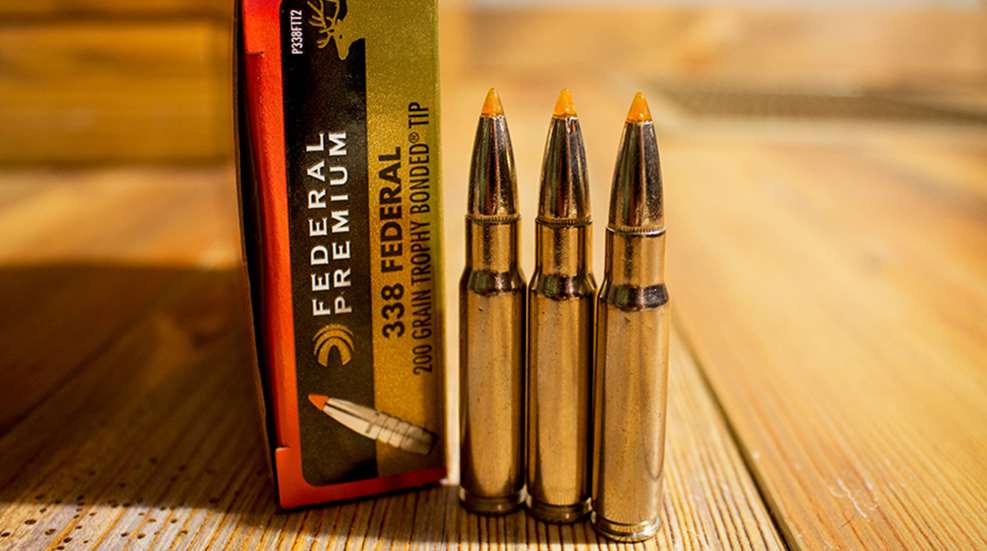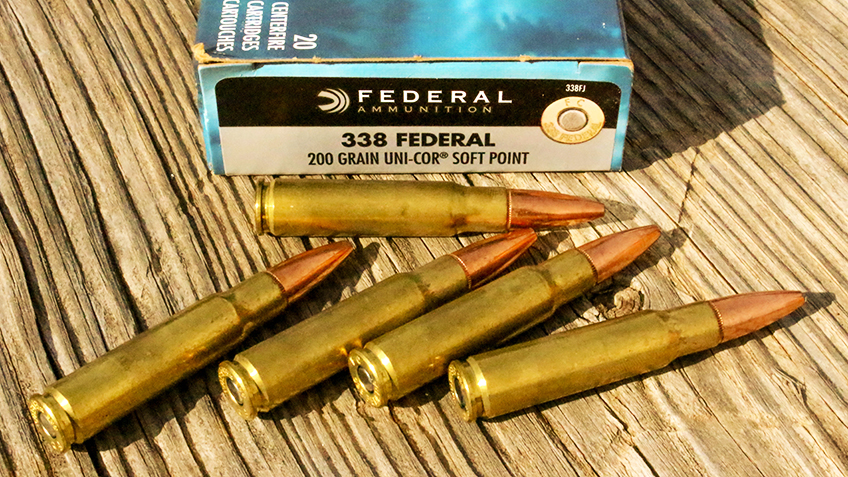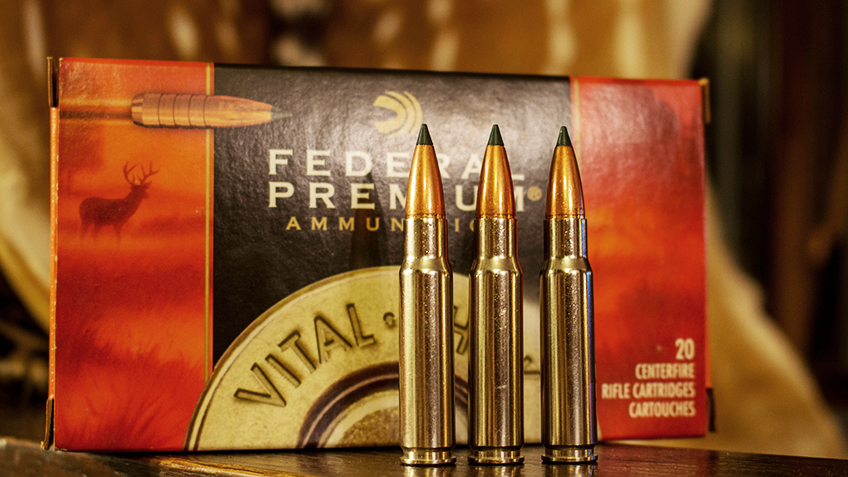
The .308 family of cartridges came along very shortly after the release of the parent; the .308 was issued to the hunting world in 1952, and Winchester kept the momentum going by bringing the .243 Winchester and .358 Winchester to the public just three years later. The .308 met some opposition from the .30-06 crowd, but the .243 certainly earned a devout following, and the .358 Winchester—though now a rarity—was once a popular woods gun for larger game.
It was a quarter-century later, in 1980, when Remington put its name on the wildcat 7mm/.308 by releasing the 7mm-08 Remington, which would go on to become one of deer hunter’s favorites. The .260 Remington would be the next of the clan to show up, and helped rekindle the love affair with 6.5mm bullets. But the last of the family—the .338 Federal—may be the most overlooked of the lot.

Released in 2006 as a joint venture between Federal and Sako, the .338 Federal may be one of the wisest choices that the big-game hunter who likes a lightweight, sweet-shooting short-action rifle could make. The cartridge is simply the .308 Winchester necked up to hold .338-inch bullets, and will fit perfectly in a short-action receiver. Like its older, larger brother, the .358 Winchester, the .338 Federal has trouble handling the heaviest bullets within the caliber, but with bullets weighing between 185 and 225 grains, it can be a very effective choice. The lighter 185- and 200-grain bullets—at a muzzle velocity of 2750 and 2630 fps, respectively—work very well on deer, bear and elk, and those premium 225-grain bullets (lately reserved to the handloading community) will handle even the large northern bears.
With a case length of 2.015 inches and a cartridge overall length of 2.820 (nearly identical to the .308 Winchester), the .338 Federal maintains the parent shoulder angle of 20 degrees; steep enough to give positive headspacing, yet gentle enough to feed smoothly and reliably from all magazines, including the MSRs. The .338 Federal was the first cartridge to bear the Federal name, and while it certainly made a splash when first released, the .338 Federal seems to be fading into obscurity.
I’m not really sure why, because my experiences with the cartridge has been nothing but positive. In the accuracy department, the .338 Federal shows its parentage in that it can be a seriously accurate hunting cartridge. Is it a 1,000-yard target cartridge? No, the .338-inch-caliber bullets that are launched by the .338 Federal case are less than desirable for long-range target work, but for a hunting cartridge—especially in a trim, lightweight hunting rifle—with a maximum range of 300 yards or so, it does quite well.
With the same bullet weight, the .338 Federal will better the velocities of the .308 Winchester by 200 to 250 fps, though the sectional density of the .30-caliber bullets will be better than the .338s. However, the larger frontal diameter certainly makes a difference on game animals; much like using a round nose bullet, you can see the difference with larger diameter bullets on game animals.
Current factory loads—all of which are from Federal or its subsidiaries—are built around the 185- and 200-grain bullets; much like the current factory loads for the .358 Winchester, lighter bullets are employed. I like the .338-inch bore better than the .358-inch, especially with the smaller-capacity cartridges. Even in the big cases, both bore diameters tend to top out at 300 grains, but at 180 or 200 grains, between .33 and .35 caliber, I prefer the additional sectional density of the .338, as the .35s at this weight can be rather short.

Those Federal factory loads feature a good selection of bullets, from the American Eagle’s FMJ, to the Fusion line, to the standard cup-and-core Power-Shok, to the Federal Trophy Copper and Trophy Bonded Tip. For the handloader, there is a huge number of projectiles to choose from, including the classic Nosler Partition, the lighter mono-metal Barnes TSX and Cutting Edge Raptor, North Fork semi-spitzers, Sierra and Hornady cup-and-core bullets, and many more. The .338 Federal case runs on the middle-of-the-road powders, like Hodgdon’s VARGET, Alliant Reloder 15 and IMR 4064, and a standard large rifle primer.
Quite obviously, the .338 Federal is not going to be as readily available or affordable as the .308 Winchester—the latter’s military origins coupled with the benefits of being .30-caliber guarantee popularity—but for a big-game hunter who wants something a bit different, the .338 Federal can handle a rather wide number of scenarios. It’s easy on the shoulder—much like the rest of the .308 family—plenty accurate, and as almost all of the factory loads generate over 3,000 ft.-lbs. of muzzle energy, gives more than enough striking power. Here’s to hoping the .338 Federal doesn’t fade away anytime soon.
Looking for previous installments of our "Behind the Bullet" series? We've got you covered.
• .224 Valkyrie
• .338-06 A-Square
• 9.3x62mm Mauser
• .257 Weatherby Magnum
• .45-70 Government
• .300 H&H Magnum
• .25-06 Remington
• .30-06 Springfield
• 6.5 Creedmoor
• .300 Remington Ultra Magnum
• 7mm Remington Magnum
• .470 Nitro Express
• .280 Remington
• .300 Winchester Magnum
• .270 Winchester
• .222 Remington
• .45 ACP
• .404 Jeffery
• .44 Remington Magnum
• .41 Remington Magnum
• .243 Winchester
• .338 Winchester Magnum
• .357 S&W Magnum
• 6.5-284 Norma
• 8x57 Mauser
• .38 Smith & Wesson Special
• 7x57mm Mauser
• 9 mm Luger
• .35 Whelen
• .454 Casull
• .375 H&H Magnum
• .45 Colt
• .22-250 Remington
• 10mm Auto
• .308 Winchester




































